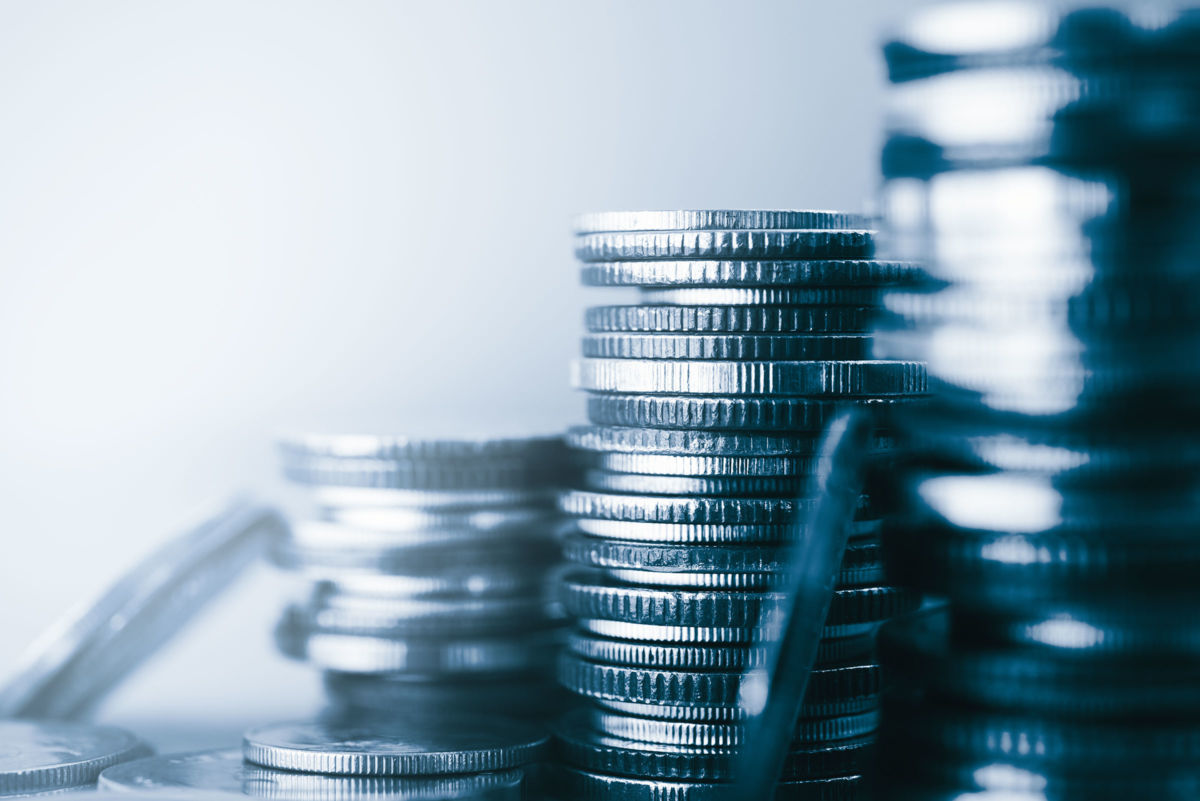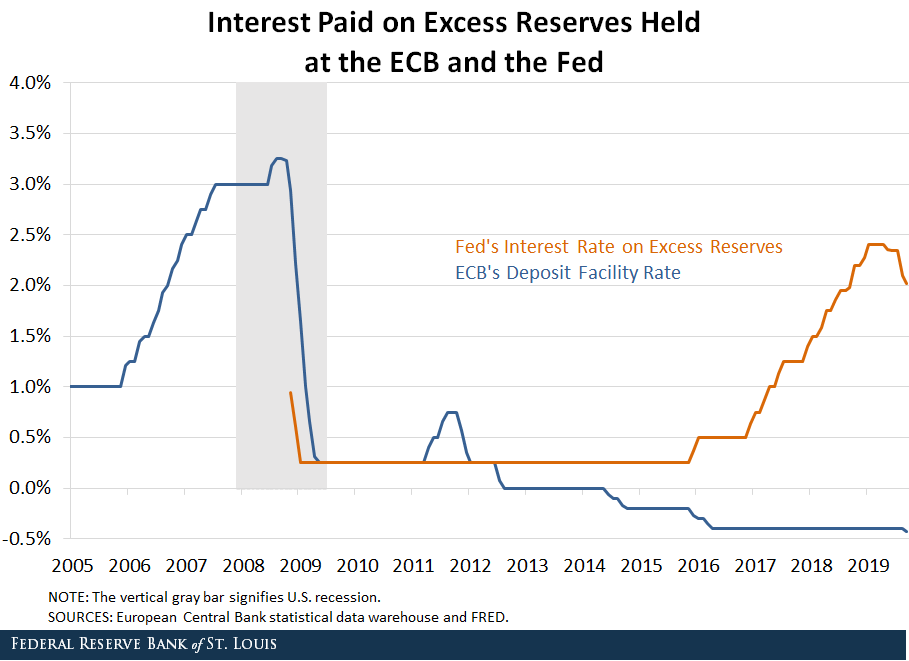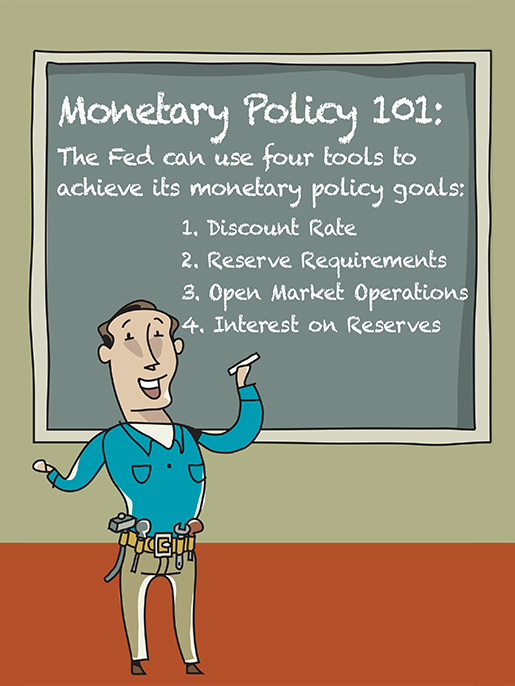Why Does The Fed Pay Interest To Banks
11 Banks have less incentive to lend excess fed funds. Maybe the Federal Reserve proposes paying interest to banks because banks are strapped for capital.
:max_bytes(150000):strip_icc()/dotdash_Final_WhatDo_the_Federal_Reserve_Banks_Do_May_2020-01-08af2fa345a440ff9df4c83495ad4328.jpg) What Do The Federal Reserve Banks Do
What Do The Federal Reserve Banks Do
All of which shows says Levine that the Fed is not a neutral arbiter.

Why does the fed pay interest to banks. The Fed rebates its profits to the government after deducting its costs and interest paid to banks is one of those costs. It is interest on money held in reserve. The Fed paid interest to banks because.
Although the payment of interest on reserves provides no meaningful subsidy the Fed does face an appearance problem from the fact that it is writing checks to banks. The Fed rate impact is the opposite when rates are lowered. It is interest on credit available to the Fed.
The Fed rebates its profits to the government after deducting its costs and interest paid to banks is one of those costs. The Fed recently acted emergently to pump 25 billion into Bear Stearns and an additional 30. The Federal Reserve has paid interest on reserves held by banks in their Fed accounts since 2008.
That means we the taxpayers are paying 36 billion annually to private banks for the privilege of parking their excess reserves at one of the most secure banks in the world parking their reserves rather than lending them out. That means we the taxpayers are paying 36 billion annually to private. It is interest on money held in reserve.
This problem will likely get. A whopping 15 trillion in reserves are now sitting in Fed reserve accounts. Why does the Fed pay interest to banks.
It is interest on money held in reserve. On March 15 2020 the Fed announced it had reduced the reserve requirement ratio to zero effective March 26 2020. Which statement best describes how the Feds use of open market operations affects banks.
It is interest on loans taken by the Fed. Thus banks got rid of excess reserves beyond their legally required reserves as quickly as possible like a hot potato. Why does the Fed pay interest to banks.
The Feds primary purpose throughout QE was to lower interest rates and spur economic growth. It did so to encourage banks to lend out all of their funds during the COVID-19 coronavirus pandemic. Since forcing banks to hold unremunerated reserves would be akin to levying a tax on them paying interest on these balances is a way to eliminate or greatly reduce that tax and its negative effects.
Thats because banks could earn a positive interest rate on safe assets such as T-bills but the Fed paid no interest at all on bank reserves. Why should it do so. A low prime rate helps companies cheaply borrow money so they can expand and create jobs and low mortgage rates help people afford more expensive homes.
Besides impairing its ability to target interest rates the Fed is worried that narrow banks will take funding away from regular banks making it harder for those banks to trade stocks and bonds a business largely funded by repo as well as jeopardizing their lending business. Money is now less expensive for banks to borrow which means they can lend it to you for a cheaper price. Second the Fed now pays banks interest on excess reserves.
Using your money is now less profitable for the bank so the reward they offer for access is often lowered. The Fed rebates its profits to the government after deducting its costs and interest paid to banks is one of those costs. Here we describe some benefits of paying interest on required reserve balances.
Banks base all short-term interest rates on the fed funds rate. This proposal was intended to improve monetary policy by making it easier to hit short-term interest rate targets. The federal funds rate is important because it determines how expensive it is for banks to access the capital they use to make loans.
Listen to this article Four decades ago Milton Friedman recommended that central banks like the Federal Reserve pay interest to depository institutions on the reserves they are required to hold against their deposit liabilities. If the federal funds rate is high its more expensive for banks to access capital so they are less likely to make loans.
 Is The Federal Reserve Giving Banks A 12bn Subsidy The Economist
Is The Federal Reserve Giving Banks A 12bn Subsidy The Economist
 Why Is The Fed Paying So Much Interest To Banks
Why Is The Fed Paying So Much Interest To Banks
/what-are-interest-rates-and-how-do-they-work-3305855-FINAL2-2f4b8e003d8d475fa79182d2a5cd4aa4.png) Interest Rates Definition How They Work Examples
Interest Rates Definition How They Work Examples
 Should The Fed Pay Interest On Bank Reserves Mercatus Center
Should The Fed Pay Interest On Bank Reserves Mercatus Center
 At Taxpayers Expense Fed Paid Banks 38 5 Billion In Interest On Reserves In 2018 Here S How Wolf Street
At Taxpayers Expense Fed Paid Banks 38 5 Billion In Interest On Reserves In 2018 Here S How Wolf Street
 A Primer On Negative Interest Rates St Louis Fed
A Primer On Negative Interest Rates St Louis Fed
 Sf Fed Why Did The Federal Reserve Start Paying Interest On Reserve Balances Held On Deposit At The Fed Does The Fed Pay Interest On Required Reserves Excess Reserves Or Both
Sf Fed Why Did The Federal Reserve Start Paying Interest On Reserve Balances Held On Deposit At The Fed Does The Fed Pay Interest On Required Reserves Excess Reserves Or Both
 What Is The Federal Reserve A Guide To The World S Most Powerful Central Bank Bankrate
What Is The Federal Reserve A Guide To The World S Most Powerful Central Bank Bankrate
Why Or Why Not Keep Paying Interest On Excess Reserves Liberty Street Economics
 Sf Fed Why Did The Federal Reserve Start Paying Interest On Reserve Balances Held On Deposit At The Fed Does The Fed Pay Interest On Required Reserves Excess Reserves Or Both
Sf Fed Why Did The Federal Reserve Start Paying Interest On Reserve Balances Held On Deposit At The Fed Does The Fed Pay Interest On Required Reserves Excess Reserves Or Both
 Should The Fed Pay Interest On Bank Reserves Mercatus Center
Should The Fed Pay Interest On Bank Reserves Mercatus Center
 Opinion Why The Fed Paid Banks Not To Lend Marketwatch
Opinion Why The Fed Paid Banks Not To Lend Marketwatch
 How Monetary Policy Works In Plain English St Louis Fed
How Monetary Policy Works In Plain English St Louis Fed
 At Taxpayers Expense Fed Paid Banks 38 5 Billion In Interest On Reserves In 2018 Here S How Wolf Street
At Taxpayers Expense Fed Paid Banks 38 5 Billion In Interest On Reserves In 2018 Here S How Wolf Street
Comments
Post a Comment